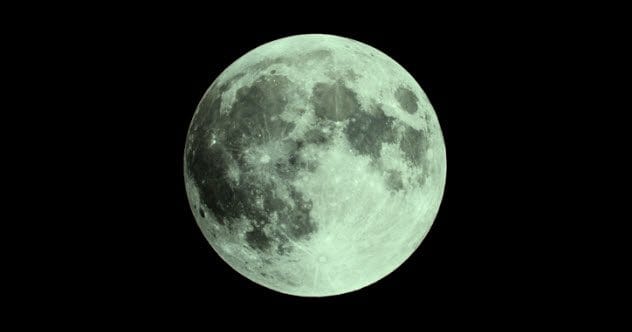The night sky is full of amazing things, but the moons of our solar system are some of the most interesting. While Earth only has one moon, other planets have many, each with its own size, what it’s made of, and history. These moons range from small, rocky pieces to big, planet-like objects with complicated surfaces and even air around them.
The biggest moons in our solar system go around the gas giant planets like Jupiter, Saturn, Uranus, and Neptune. Way out from the Sun, these huge planets have some of the most interesting and mysterious moons we’ve ever seen. From icy surfaces that are cracked by the pull of the planets to volcanoes that shoot out sulfur, these moons are like labs for studying extreme places.
This list looks at the ten biggest moons in the solar system, from smallest to largest. It tells their secrets and points out the things astronomers and space missions have found out over the years. Whether it’s Oberon’s icy loneliness or Ganymede’s huge oceans, each moon tells a story about its planet’s past and gives hints about the bigger puzzles of our cosmic area.
Oberon (Uranus)
Oberon is the farthest out of Uranus’s main moons. It’s a frozen place made of ice and rock, about 473 miles (761 kilometers) across—around the size of Nebraska. Its empty surface has big holes from crashes and dark spots that suggest old smash-ups. Voyager 2, which is the only spacecraft to have visited Oberon in 1986, showed a bare place with tall cliffs and icy flatlands. Even though it’s far from Earth and very cold, Oberon is still interesting for astronomers to study.
What makes Oberon really interesting is where its name comes from. It’s named after the king of the fairies in Shakespeare’s A Midsummer Night’s Dream, showing how art and science go together. The icy spots and dark areas hint at a long history of impacts, but we don’t really know what shaped its surface. Future missions might find hidden geological activity under its icy shell. With not enough gravity for people to stand on and temperatures way below freezing, Oberon is hard to explore. Still, its mysterious nature makes it a place worth going back to.
Rhea (Saturn)
Rhea is Saturn’s second-biggest moon, an icy ball covered in holes like a small version of Earth’s Moon. It is 475 miles (764 kilometers) across, a bit bigger than Oberon. Its surface, full of holes, tells of many crashes over billions of years. NASA’s Cassini spacecraft showed that Rhea’s surface is one of the coldest in the solar system, with temperatures dropping to -281°F (-174°C).
One of the most noticeable things about Rhea is that it’s simple. Unlike many other moons, it doesn’t have much geological activity. Its gray surface, marked by holes and cracks, suggests a moon that has been geologically quiet for a very long time. But its quietness is also important. Studying Rhea gives ideas about the history of Saturn’s system and the icy moons that orbit beyond it. With its low gravity and harsh conditions, Rhea isn’t a friendly place for astronauts. However, its similarities to our Moon make it a good thing to study to compare.
Titania (Uranus)
Titania, the biggest moon of Uranus, is 1,000 miles (1,609 kilometers) across and is a world of icy differences. Like Oberon, Titania’s surface has bright ice spots and darker areas, but it’s much bigger and more active. Discovered in 1787 by William Herschel, Titania has captured astronomers’ interest for centuries.
Voyager 2’s pictures showed a mysterious hole and a system of canyons and cracks, suggesting past geological activity. Titania’s ice could be a source of water for future missions, but its very cold surface and weak gravity make it hard for people to explore. Named after the queen of the fairies in A Midsummer Night’s Dream, Titania keeps inspiring dreams of what’s under its icy shell. Could there be oceans under the surface? Only a space mission to Uranus could answer that question.
Triton (Neptune)
Triton is not just Neptune’s biggest moon but also one of the most unusual in the solar system. At 1,681 miles (2,706 kilometers) across, it’s known for its orbit going the opposite way of Neptune’s spin, suggesting it was likely caught by Neptune’s gravity. Voyager 2’s flyby in 1989 showed a strange place, including nitrogen geysers and a surface covered in pink and green icy crystals.
This moon’s active geology is caused by the pull of the tides, which keeps its inside warm. Ice volcanoes on Triton release nitrogen vapor, making a thin atmosphere and adding to its visual appeal. Even though it’s appealing, Triton’s extreme cold and isolation make it unlikely for people to visit. But its active surface makes it a good choice for robotic missions to study the processes that shape icy moons.
Europa (Jupiter)
Europa, one of Jupiter’s four biggest moons, has long made scientists curious about its potential for life. At 1,940 miles (3,130 kilometers) across, Europa’s icy surface is covered in red lines caused by the pull of Jupiter’s strong gravity. Under this cracked surface is a global ocean, kept liquid by heat from the moon’s inside.
Europa’s underground ocean has caused talk about the chance of life outside Earth, like deep-sea ecosystems on Earth. NASA has suggested missions to drill through Europa’s ice to find out if simple living things could live in its hidden depths. For now, Europa is one of the best chances for finding life beyond Earth.
Earth’s Moon
Earth’s Moon is the most well-known thing on this list, and the only one humans have walked on. At 2,159 miles (3,474 kilometers) across, it’s the fifth-biggest moon in the solar system. The Apollo missions in the 1960s and ’70s not only changed space exploration but also gave people their first close-up views of another world. From the famous “Blue Marble” photo to finding lunar rocks, the Moon has shaped our understanding of how planets work.
Recent studies suggest that the Moon’s holes might have ice, a helpful thing for future missions. Its surface, a mix of gray flatlands and holes from crashes, shows a history of asteroids hitting it and volcanoes. The Moon’s weak gravity and lack of air make it hard for people to live there, but its closeness to Earth makes it a good first step for more exploration. With plans for lunar bases, Earth’s Moon keeps inspiring dreams of people living beyond our planet.
Io (Jupiter)
Io is a fiery show of volcanic activity and the most geologically active thing in the solar system. At 2,260 miles (3,640 kilometers) across, it’s a bit bigger than Earth’s Moon. Unlike other moons, Io’s surface is always being changed by its hundreds of active volcanoes, which shoot out sulfur and melted rock. This constant activity gives Io its special “pizza-like” look, with spots of yellow, red, and orange.
Io’s strong volcanic activity is powered by the pull of Jupiter and nearby moons Europa and Ganymede, which make friction and heat inside Io. While it’s interesting, Io’s environment is very dangerous. Jupiter’s strong radiation belts make it a deadly place for humans, and the volcanic explosions would destroy any unprotected lander. Robotic missions are the best way to study this active moon, which gives ideas about geological processes that might also happen on young planets.
Callisto (Jupiter)
Callisto, the second-biggest moon of Jupiter, is very different from its volcanic sibling Io. With a diameter of 3,000 miles (4,800 kilometers), it’s almost the size of Mercury. Its surface has the most holes from crashes in the solar system, showing its old history. Callisto’s icy, dark surface has bright white spots, showing where water ice is.
Orbiting farther from Jupiter than Io, Callisto avoids the strong radiation that hurts its inner moons, making it a better target for future human exploration. NASA has suggested using Callisto as a base for missions to Jupiter and beyond. While its geology isn’t as active as Io’s, Callisto’s old surface and possible underground ocean give helpful clues about the early solar system.
Titan (Saturn)
Titan, Saturn’s largest moon, is a world of mystery and wonder. At 3,200 miles (5,150 kilometers) across, it’s the second-largest moon in the solar system and the only one with a thick atmosphere. Titan’s atmosphere, full of nitrogen and methane, makes a hazy orange glow and has a methane cycle similar to Earth’s water cycle.
The Cassini mission and its Huygens probe gave important information about Titan’s surface, showing lakes and rivers of liquid methane and ethane. These hydrocarbon seas make Titan one of the most Earth-like places in the solar system, though the temperatures are cold enough to freeze water solid. While its surface is not friendly, Titan’s thick atmosphere could protect future missions from radiation, making it a good choice for exploration. Its complicated chemistry and active weather patterns make Titan a key place to look for life outside Earth.
Ganymede (Jupiter)
Ganymede, the largest moon in the solar system, is a giant among giants. At 3,275 miles (5,270 kilometers) across, it’s bigger than the planet Mercury. Ganymede is special in many ways: it has its own magnetic field, a thin oxygen atmosphere, and a varied surface of dark and light areas.
NASA’s Galileo spacecraft took detailed pictures of Ganymede, showing a place of icy flatlands, lines, and holes. Under its frozen surface is a big underground ocean, possibly holding more water than all of Earth’s oceans. Ganymede’s size and features make it almost a planet, and its magnetic field gives clues about what it’s like inside.
While Ganymede’s harsh environment makes it hard to reach, it’s still an important focus for future missions. The European Space Agency’s JUICE mission, set to explore Jupiter’s moons in the 2030s, wants to find out the secrets of this icy giant. Ganymede’s mix of size, complexity, and possible living conditions makes it the most interesting moon in the solar system.
From the frozen landscapes of Oberon to the colossal Ganymede, these moons present a diverse range of environments, each holding unique scientific value. They offer insights into the formation of our solar system, the potential for extraterrestrial life, and the geological processes that shape celestial bodies.
Which of these moons fascinates you the most? Leave your comment below!










